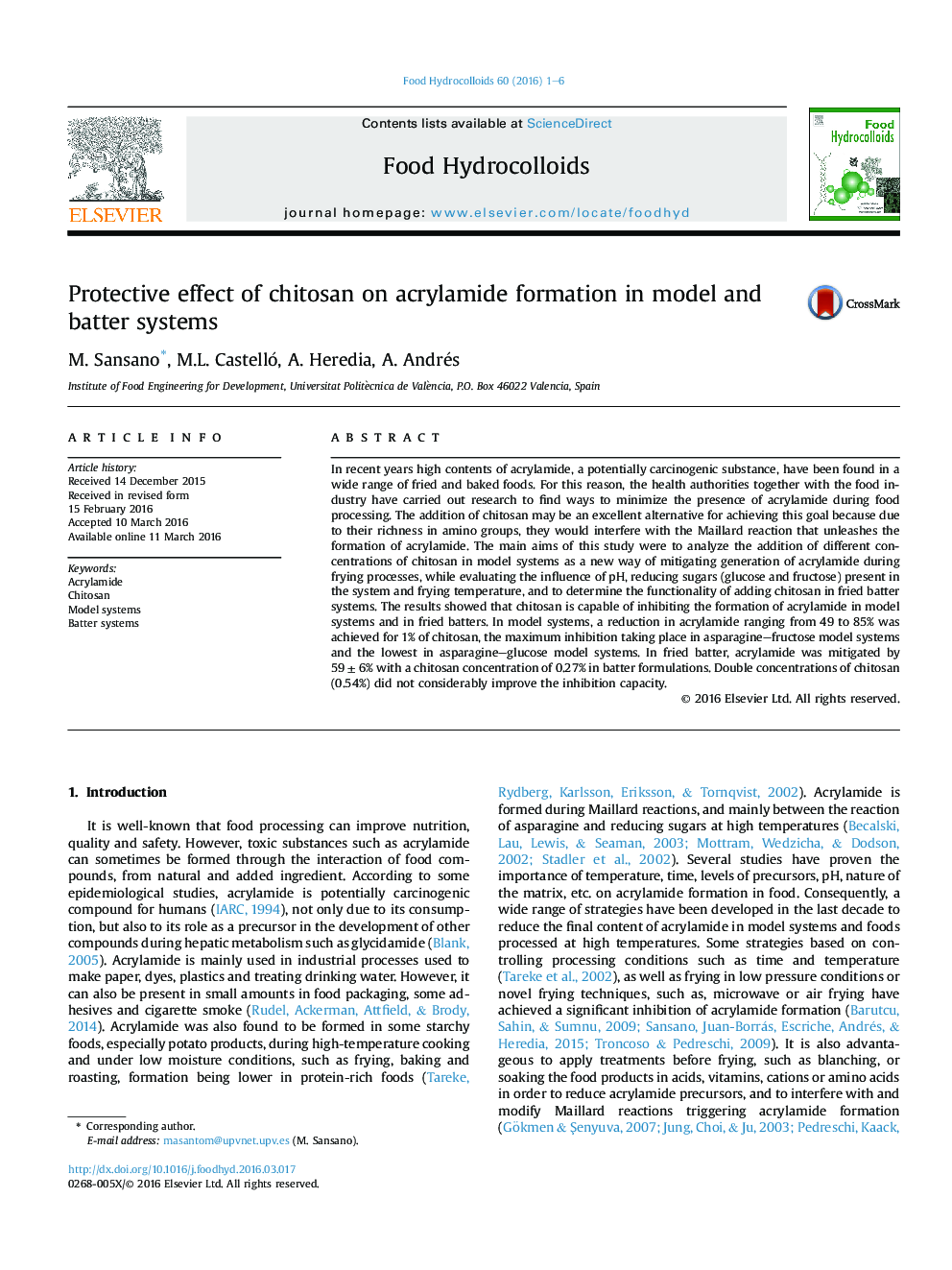| کد مقاله | کد نشریه | سال انتشار | مقاله انگلیسی | نسخه تمام متن |
|---|---|---|---|---|
| 603548 | 1454417 | 2016 | 6 صفحه PDF | دانلود رایگان |
• 59% of acrylamide (AA) inhibition was reached in fried batters with 0.27% of chitosan.
• AA reduction up to 85% was possible in fructose-model systems with 1% of chitosan.
• The higher the chitosan content the lower the temperature effect on AA generation.
In recent years high contents of acrylamide, a potentially carcinogenic substance, have been found in a wide range of fried and baked foods. For this reason, the health authorities together with the food industry have carried out research to find ways to minimize the presence of acrylamide during food processing. The addition of chitosan may be an excellent alternative for achieving this goal because due to their richness in amino groups, they would interfere with the Maillard reaction that unleashes the formation of acrylamide. The main aims of this study were to analyze the addition of different concentrations of chitosan in model systems as a new way of mitigating generation of acrylamide during frying processes, while evaluating the influence of pH, reducing sugars (glucose and fructose) present in the system and frying temperature, and to determine the functionality of adding chitosan in fried batter systems. The results showed that chitosan is capable of inhibiting the formation of acrylamide in model systems and in fried batters. In model systems, a reduction in acrylamide ranging from 49 to 85% was achieved for 1% of chitosan, the maximum inhibition taking place in asparagine–fructose model systems and the lowest in asparagine–glucose model systems. In fried batter, acrylamide was mitigated by 59 ± 6% with a chitosan concentration of 0.27% in batter formulations. Double concentrations of chitosan (0.54%) did not considerably improve the inhibition capacity.
Figure optionsDownload as PowerPoint slide
Journal: Food Hydrocolloids - Volume 60, October 2016, Pages 1–6
